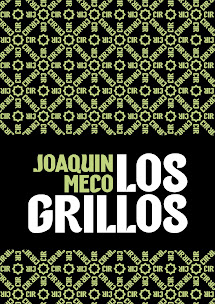It is hard to know whether the best art is interested in fascinating themes or, by the contrary, good art makes any topic into something interesting, probably it works in both senses. The fact is I had a vague interest in the Israeli-Palestinian conflict, wondering for something else than the quick media news, unable to make up my mind or have any deep look into it. But after reading Joe Sacco’s Footnotes in Gaza some years ago, I resolved to go through as many of his books as I could. Fortunately, thanks to the nowadays internet shopping, this was much easier than before, when we had to travel to an English speaking country in order to buy some non-bestseller books in their original language. I felt so enthusiastic about his work that I became more concerned on the issue and looked for further information. He really accomplished to write and draw a thick, vivid and complex comic book on his experience of living the everyday life of the people in the Gaza Strip.
However, it wasn’t the first book by the American Joe Sacco on this conflict. There was a previous series of nine issues later gathered together with the title Palestine. As with his works on the Bosnian war, he has written several books and shorter reporting pieces for magazines and newspapers on the same few topics he has been focusing on from slightly different perspectives, adding nuances and new points of view to his already complex portraits of the conflict areas, blending daily life in the streets with first hand memories of significant episodes, providing us with a brief but enlightening historical context and showing the media representation of the conflict in contrast with the reality portrayed by himself. The result is a narrative made up of many interviews, conversations and a self ironic alter ego character, who imposes a critic distance, helps us to endure a continuous series of hard facts and only apparently diminishes his alignment with the victims and his moral commitment.
His masterful use of the comic techniques, the meaningful narrative contrasts, the timing to present the information and that thrilling way of portraying the memories of several observers of the same event, as well as the implicit ideas disposed as if they were essays disguised of novels are highly interesting. But the moral aspect of his reports, the terrible injustice and pain of people displaced, tortured, killed in both sides, piled into crowded and unhealthy refugee camps, condemned to unemployment and poverty and under continuous curfews, makes the attempt to clarify the formal machinery of his work sounds superfluous. Joe Sacco does not portray a conflict of good and bad guys from the beginning, we will be disappointed if we are looking for that, but as his alter ego character lives the conflict his ideas seem to change, sometimes against his own initial prejudices, as it happens in Palestine. His use of the narrator as an interviewer and a witness himself, letting other voices to speak, is an important part of his narrative strength, which derives from that recognition of subjectivity as the only way to try to understand the world as objectively as possible.








No hay comentarios:
Publicar un comentario